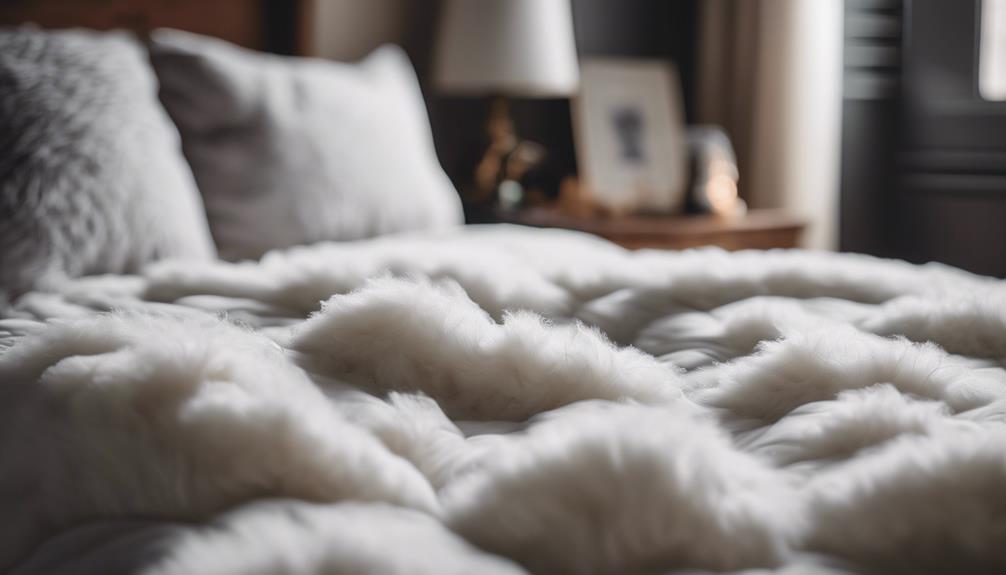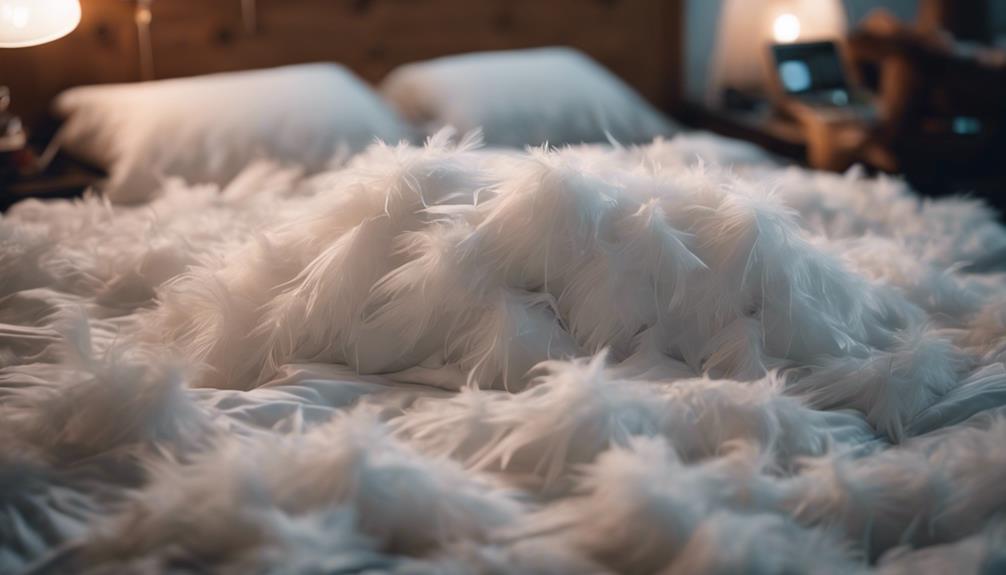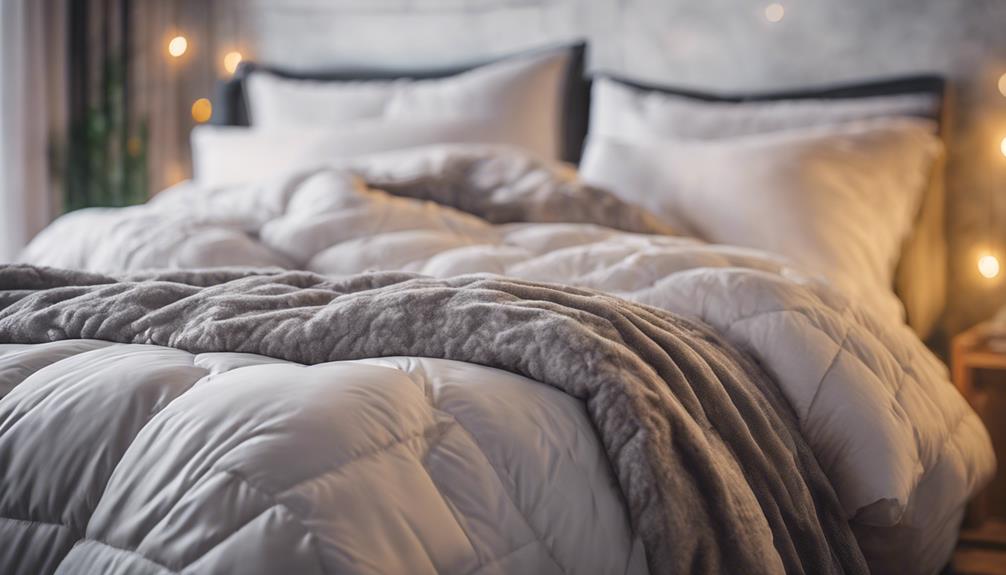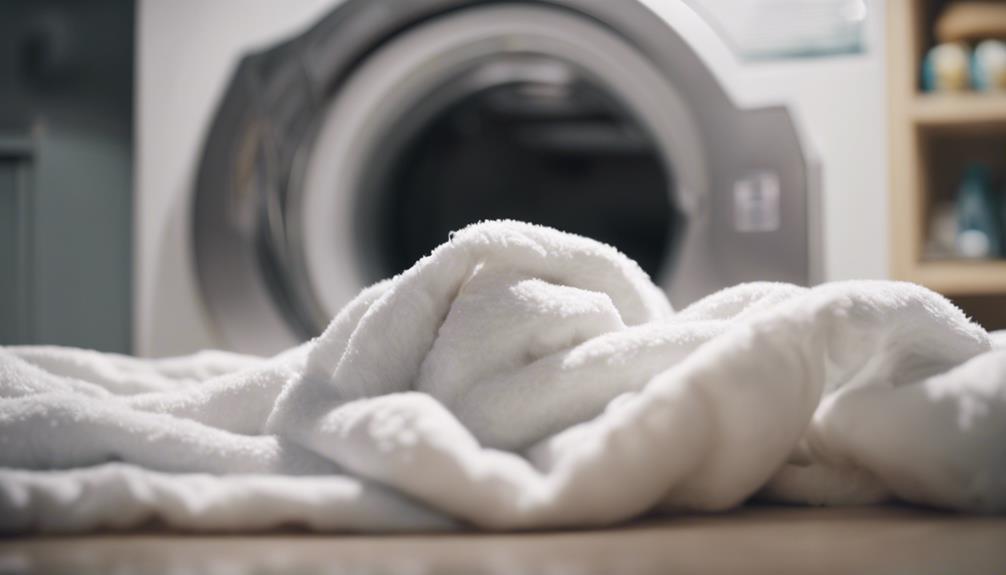Yes, a down comforter is warmer than down alternative. Down comforters excel in warmth due to their superior insulating properties. The loftiness of down feathers traps more air, providing excellent insulation with less filling. Fill power, ranging from 400 to 900, indicates warmth and fluffiness, with higher fill power offering better insulation for colder climates. Down comforters are lightweight yet cozy, popular for their warmth in colder weather. Their breathable nature allows for temperature regulation while trapping heat. For more insights on the warmth and insulating capabilities of down comforters and down alternatives, explore further details provided.
Key Takeaways
- Down comforters are warmer due to superior insulating properties.
- Higher fill power in down comforters provides better warmth.
- Down comforters are lightweight yet offer excellent warmth.
- Breathable nature of down allows for better temperature regulation.
- Down comforters excel in warmth retention compared to down alternative.
Down Comforter Insulating Properties
When comparing down comforters to down alternative, down comforters are undeniably warmer due to their superior insulating properties. The natural loftiness of down feathers allows them to trap more air, providing better insulation and keeping us cozy in colder climates. This loftiness creates pockets of air that retain heat, making down comforters warmer than down alternative options.
The fill power of down comforters is generally higher than that of down alternative, meaning they require less filling to achieve the same level of warmth. Additionally, the breathable nature of down allows for better temperature regulation, ensuring we stay warm without overheating. The combination of these factors makes down comforters a top choice for those seeking warmth and comfort during chilly nights.
Fill Power of Down Comforters
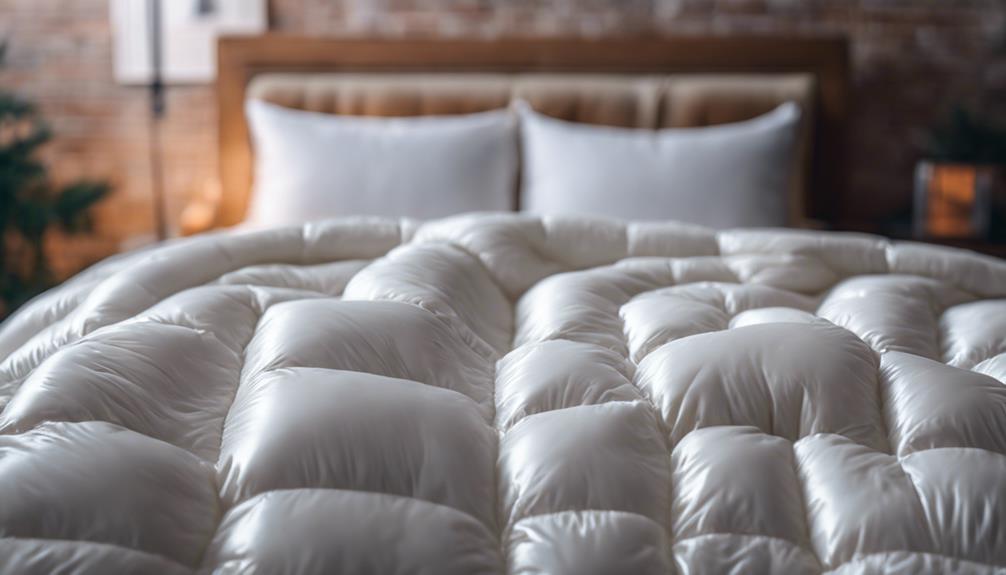
The fill power of down comforters directly correlates with their warmth and insulating capabilities. Fill power refers to the quality of the down used in comforters. Lower fill power allows for more airflow, making the comforter lighter and suitable for those who prefer less warmth.
On the other hand, higher fill power traps more heat, providing better insulation, which is ideal for colder climates. Fill power typically ranges from 400 to 900, indicating the level of warmth and fluffiness. Down comforters with fill power between 600-800 are considered excellent for colder weather, offering a balance of warmth and comfort.
Understanding fill power is important in selecting a down comforter that aligns with individual warmth preferences. By choosing the right fill power, you can make sure that your down comforter provides the level of warmth you desire for a cozy night's sleep.
Weight and Warmth of Down Comforters
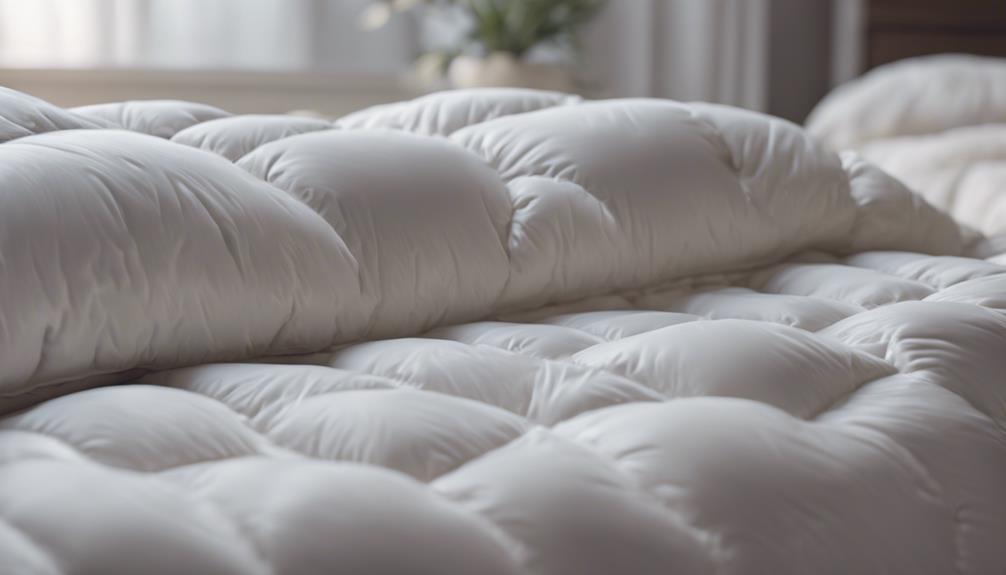
Down comforters are known for their lightweight feel and superior insulation qualities compared to down alternative options.
The weight of a down comforter is lighter but still provides excellent warmth due to its high fill power.
This combination of weight and warmth makes down comforters a popular choice for those seeking cozy bedding.
Down Vs Alternatives
In comparing down comforters to alternatives, one can feel the difference in weight and warmth immediately. Down comforters, known for their higher fill power, excel in trapping heat and providing superior insulation, making them ideal for colder climates. The lofty and fluffy nature of down allows for excellent breathability while still offering exceptional warmth.
On the other hand, down alternatives, though warm, may feel heavier and less breathable in comparison. Fill power plays an important role in determining the warmth level, with down comforters boasting higher fill power for superior warmth retention. When seeking cozy and toasty bedding options, down comforters are often favored over down alternatives for their lightweight feel and exceptional warmth.
Insulation Quality
Indubitably, one can discern a noticeable disparity in weight and warmth when comparing down comforters to their alternative counterparts. When it comes to insulation quality, down comforters have the upper hand due to their higher fill power. Here's why down comforters excel in warmth:
- Fill Power: Down comforters typically have fill power ranging from 400 to 900, providing superior insulation for colder climates.
- Feathers: The lightweight and fluffy nature of down feathers in comforters contribute to exceptional warmth and coziness.
- Heat Retention: Down comforters are preferred for their ability to offer high levels of insulation and heat retention compared to down alternative options.
Breathability of Down Alternative
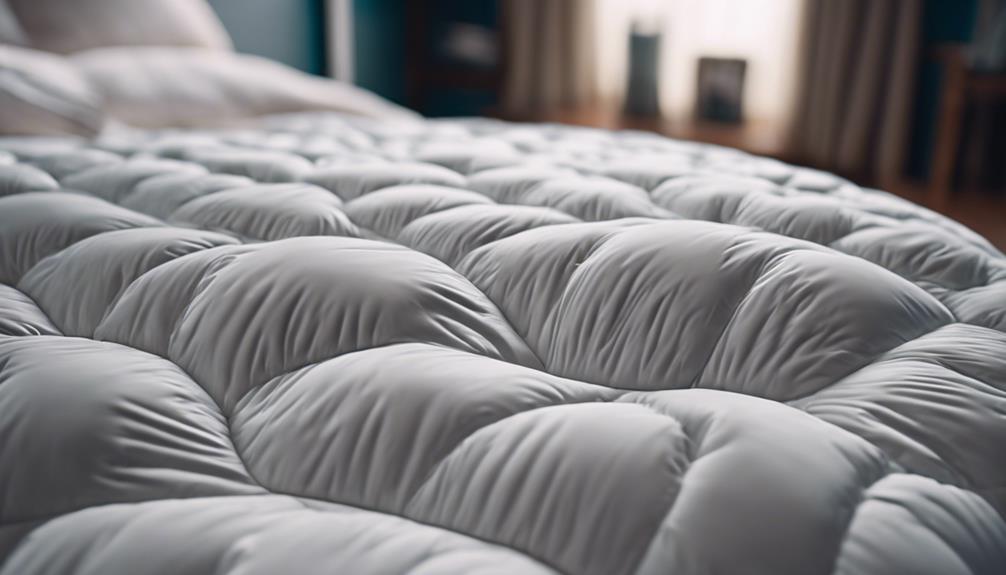
Compared to real down comforters, down alternative options tend to be less breathable due to their denser filling. The denser filling in down alternative comforters can trap heat more effectively than the airy nature of real down, hindering airflow and temperature regulation. If breathability is an important factor for you, a real down comforter might be a better choice as it allows for better airflow and prevents overheating during sleep. To illustrate the differences more clearly:
| Aspect | Down Alternative | Real Down |
|---|---|---|
| Breathability | Less breathable | Highly breathable |
| Heat Trapping | More likely to trap heat | Less likely to trap heat |
| Airflow | Hindered airflow | Better airflow |
While down alternative comforters offer warmth and comfort, they may not offer the same level of breathability as real down comforters. This distinction is essential to take into account when selecting the ideal bedding for your needs.
Insulation Comparison: Down Vs. Down Alternative

When comparing insulation between down and down alternative comforters, we need to take into account the thermal efficiency, material composition, and cost performance.
Down comforters generally offer better thermal efficiency due to their natural loftiness and warmth-trapping properties.
Understanding these factors can help us determine which type of comforter will provide the best level of insulation for our individual needs.
Thermal Efficiency Comparison
Discussing the thermal efficiency comparison between down and down alternative comforters reveals the superior warmth and insulation properties of down comforters due to their higher fill power.
Here are three key points to keep in mind:
- Down comforters have higher fill power, trapping more heat for extra warmth in colder climates or for those who prefer a cozy feel.
- Down alternative comforters, with synthetic or natural fiber fills, may not offer the same level of thermal efficiency as down.
- Down comforters provide a cozier sleeping experience by retaining heat better than down alternative options.
Material Composition Variance
We can clearly observe that the material composition variance between down and down alternative comforters greatly influences their insulation capabilities.
Down comforters often outperform down alternative in warmth due to the superior loft and fill power of down feathers. The natural insulating properties of down create more air pockets, enhancing its ability to trap heat effectively. In colder climates, down comforters are favored for their ability to provide maximum warmth.
On the other hand, down alternative may require more filling to achieve the same level of insulation as down. The fluffy nature of down feathers plays an essential role in the material composition, contributing to the overall warmth and comfort provided by down comforters over down alternative options.
Cost and Performance
Comparing the cost and performance of down comforters to down alternative options reveals the superior insulation capabilities of down due to its higher fill power.
- Down comforters typically have higher fill power, providing better insulation and warmth compared to down alternative comforters.
- The cost of down comforters is generally higher than down alternative options due to the premium quality of real down.
- Down alternative comforters may require more filling to achieve the same level of insulation as down, impacting their overall warmth.
Down Alternative Fill Level
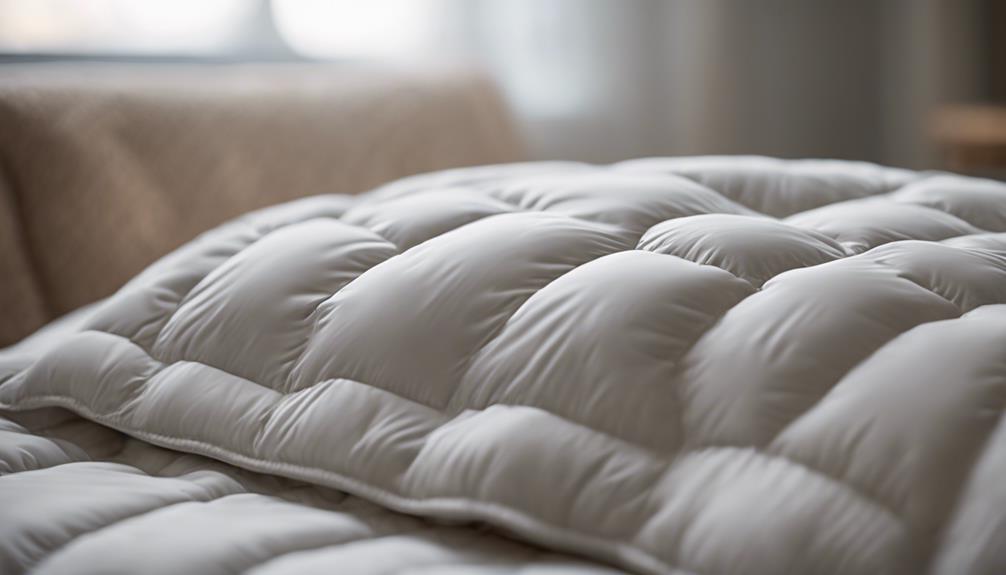
Down alternative comforters with higher fill levels often provide increased insulation but may also result in a heavier overall weight compared to down comforters. The denser construction of down alternative fillings can make them less effective in regulating temperature.
While down alternative comforters may require more filling to achieve comparable insulation levels, they're generally considered less warm than down comforters. Understanding the fill level and construction of down alternative comforters is crucial in determining their warmth compared to down comforters.
Despite the potential for increased insulation with higher fill levels in down alternative comforters, the denser filling and weight may impact their ability to regulate temperature effectively. In contrast, down comforters are often preferred for their superior warmth due to their lighter weight and efficient insulation properties.
When considering between down and down alternative options, the fill level and construction play key roles in determining which type of comforter may best suit individual warmth preferences.
Superior Warmth of Down Comforter
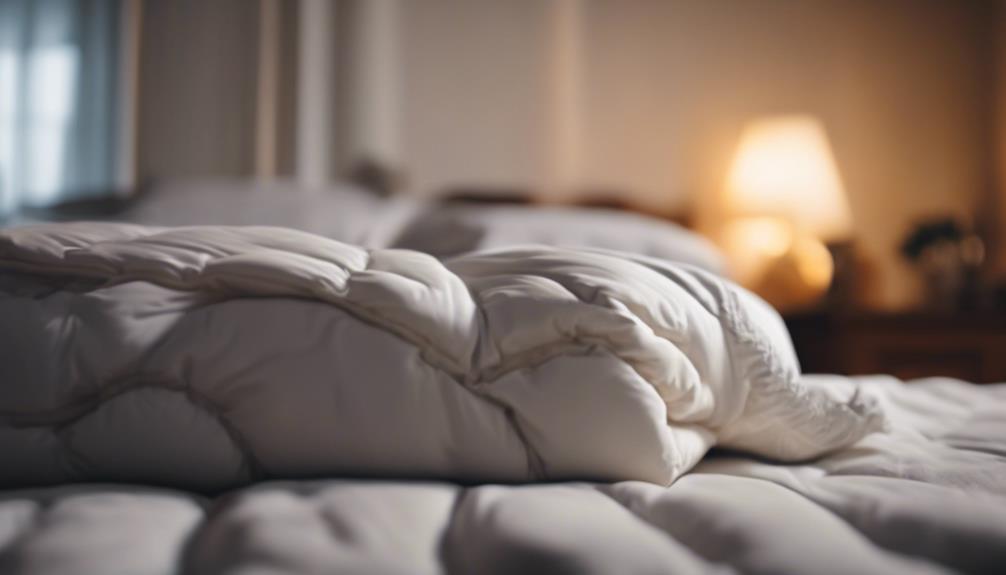
When considering warmth in bedding options, the superior insulation provided by down comforters stands out due to the natural insulating properties of down feathers. Here are three reasons why down comforters offer exceptional warmth:
- Fill Power: The fill power of down comforters, especially those with higher fill power ratings, traps more heat effectively, providing superior warmth compared to down alternative options.
- Cozy Sleeping Experience: The loftiness and fluffiness of down comforters create air pockets that retain heat, offering a cozy sleeping experience. These air pockets help to regulate body temperature, keeping you warm throughout the night.
- Ideal for Cold Sleepers: Down comforters are ideal for cold sleepers or individuals living in colder climates where extra warmth is desired. The insulating ability of down feathers ensures that you stay comfortably warm, making it a popular choice for those seeking a snug and cozy night's sleep.
Down Vs. Down Alternative in Colder Climates
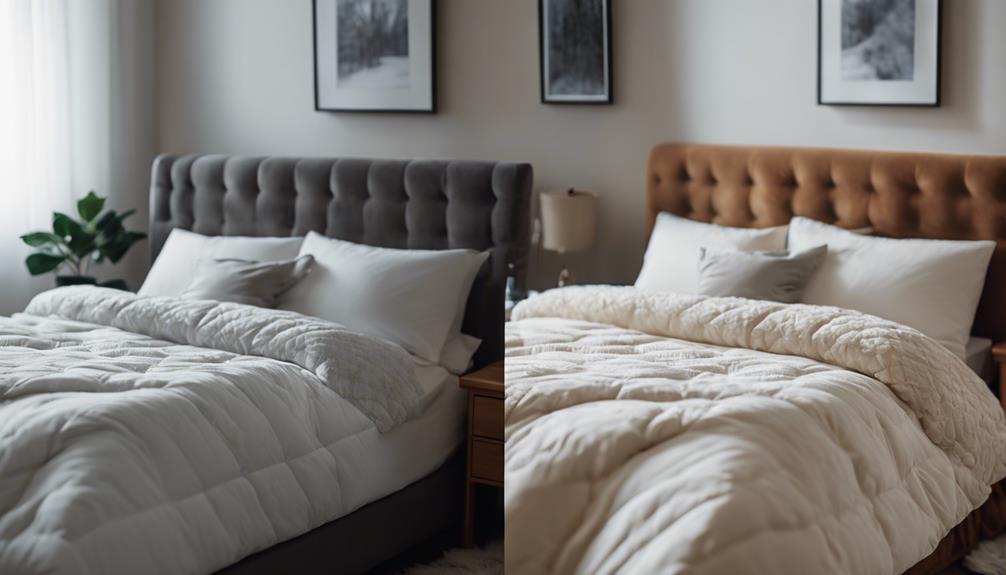
In colder climates, the decision between a down comforter and a down alternative becomes essential for ensuring maximum warmth and comfort during chilly nights. Down comforters with higher fill power, like 600-800 fill, excel in colder regions due to their superior insulation and warmth retention capabilities. They trap more heat while remaining breathable, providing better warmth compared to down alternative comforters.
Down alternative comforters may need more filling to match the warmth of down, making them less effective in regulating temperature in colder climates. Additionally, down alternative comforters tend to be heavier and less breathable, which can impact their ability to keep sleepers warm and cozy in cold weather conditions.
Down Comforter Vs. Down Alternative Insulation
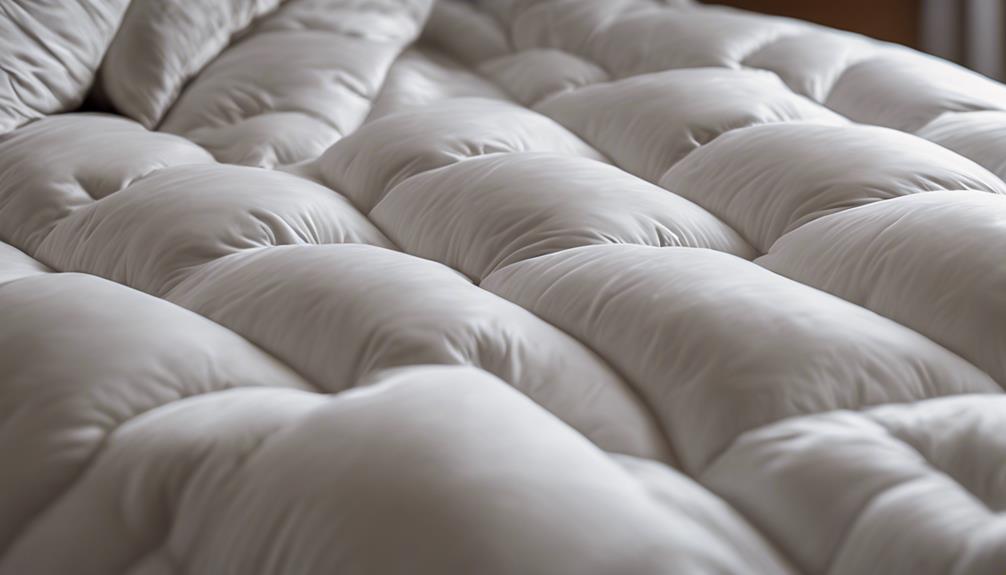
Opting for a down comforter over a down alternative guarantees superior insulation and warmth retention in colder climates. When comparing the two, down comforters have distinct advantages regarding warmth and coziness:
- Fill Power: Down comforters with higher fill power are warmer than down alternative due to their superior insulation capabilities.
- Heat Retention: Down comforters trap more heat and provide better warmth retention compared to down alternative, making them ideal for chilly nights.
- Fluffiness: The loftiness and fluffiness of down comforters contribute significantly to their superior warmth, creating a cozy and snug environment for a good night's sleep.
Frequently Asked Questions
Do Down Alternative Comforters Feel Like Down?
Down alternative comforters provide a similar feel to down using synthetic fibers like polyester microfiber. They offer a plush, warm, and lofty look akin to down but are generally more cost-effective.
People with allergies to natural down feathers often prefer these hypoallergenic options. While not identical in warmth and fluffiness to real down, down alternative offers a budget-friendly and easy-to-care-for alternative.
Which Is Better for the Environment, Down or Down Alternative?
When considering the environmental impact, down alternative bedding is often seen as the more eco-friendly choice. It doesn't involve the harvesting of feathers from animals, which aligns with ethical and sustainable practices.
Do Hotels Use Down or Down Alternative Comforters?
Hotels often choose down comforters for their cozy warmth and luxurious feel. Down alternatives are less common in upscale hotels due to the premium quality and durability of authentic down options.
The lofty and plush nature of down comforters enhances the guest experience, creating a more luxurious sleeping environment.
Is Goose Down Cooler Than Down Alternative?
When comparing goose down to down alternative, goose down is typically warmer due to its superior insulating properties. Its loftiness traps more heat, making it cozy for colder nights.
Down alternative, on the other hand, may be cooler as it's less insulating, providing a more breathable option. Consider personal warmth preferences and climate when deciding between the two.
Goose down is warmer, while down alternative may offer a cooler sleep experience for those who prefer it.
Will Using a Down Comforter Aggravate Allergies More Than a Down Alternative?
Using a down comforter allergies cause is a common concern for allergy sufferers. However, studies have shown that down comforters can actually be hypoallergenic if properly cared for. Down alternative may be more likely to trap dust and allergens, aggravating allergies more than a down comforter.
Conclusion
To sum up, when considering warmth, weight, and breathability, a down comforter is indeed warmer than a down alternative. The fill power of down provides superior insulation, making it perfect for colder climates.
With its high fill level and excellent breathability, a down comforter offers unparalleled warmth and comfort. So, when it comes to staying cozy and warm, choosing a down comforter over a down alternative is the way to go.
